Search Results for 'Abbey Church'
15 results found.
James Hardiman, historian
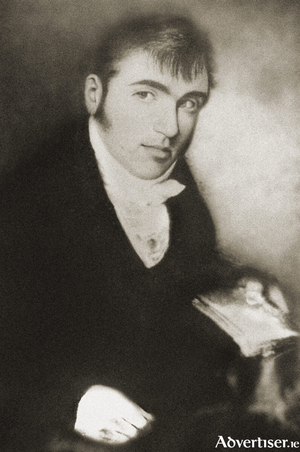
James Hardiman, who wrote the history of Galway, died on this day, November 13, 1855. He was born in Westport in 1782, the son of Tomás Ó hArgadáin and Marcella Hall. Irish was his first language. The family moved to Galway where his father had a ‘small but respectable shop’. He had hoped to study for the priesthood but he had to give up that idea when he lost his right eye in an accident. He studied law instead in the King’s Inns in 1804, became a solicitor in 1814 and worked in the Public Records Office from 1811-1830.
Altar boys in the Abbey
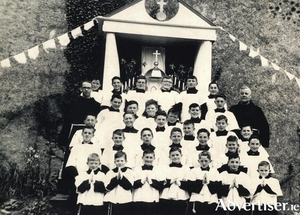
An altar boy is a lay assistant to a member of the clergy during a Christian liturgy.
Altar boys in the Abbey
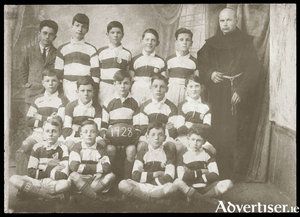
An altar boy is a lay assistant to a member of the clergy during a Christian liturgy.
The Franciscans in Galway
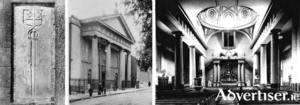
In the graveyard at the back of the Abbey Church in Francis Street stands an interesting memorial carrying the De Burgo coat of arms and a long broadsword. The inscription tells us that it was erected in memory of William De Burgo who founded the Franciscan friary on St Stephen’s Island in 1296. The site was roughly where the Courthouse is today and the island was formed by the Galway River on one side and a branch of that river which ran through what today would be Woodquay and Mary Street and re-joined the main river. A second and smaller island lay between St Stephen’s and the town wall, so that in order to maintain communications with the town, two bridges were necessary, one at the junction of Mary Street and Abbeygate Street and the other at the Little Gate. The Abbey buildings lay immediately north of the present graveyard and between them and the river was ‘Sruthán na mBráthair’, a small stream that enabled the friars to bring boats in from the main river. The monastery was known as the Abbey of St Francis.
Galway City to unite in faith for the Feast of Corpus Christi
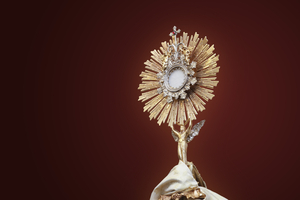
This Sunday June 2, Galway city will celebrate the Feast of Corpus Christi with a Eucharistic Procession, inviting all residents and visitors to participate in this sacred tradition.
Galway City Corpus Christi Procession to travel over new bridge
To mark the Feast of Corpus Christi on Sunday June 11, a Eucharistic Procession will take place in Galway City and its route will include the new Salmon Weir Pedestrian and Cycle Bridge.
The Abbey Church
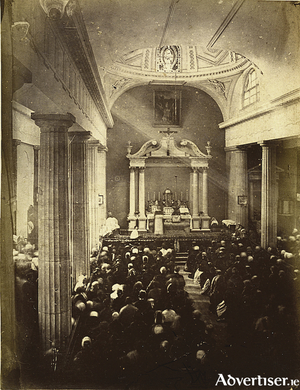
In the year 1296, Uilliam Liath De Burgo started to build a monastery for the Franciscans on a site roughly where the Courthouse is today. It became known as “St Francis’ Abbey on the island of Saint Stephen on the north side of the town”. The island was formed by the river on the west side, and by a branch of the river running through what is Woodquay and Mary Street today, to join the main stream above O’Brien’s Bridge. A second and smaller island lay between St Stephen’s and the town wall, so in order to communicate with the town, two bridges were necessary, one at the junction of Mary Street and Abbeygate Street and the other at the Little Gate.
The Abbey Church
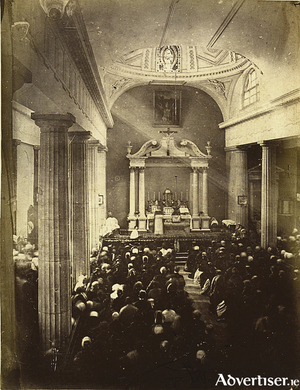
In the year 1296, Uilliam Liath De Burgo started to build a monastery for the Franciscans on a site roughly where the Courthouse is today. It became known as “St Francis’ Abbey on the island of Saint Stephen on the north side of the town”. The island was formed by the river on the west side, and by a branch of the river running through what is Woodquay and Mary Street today, to join the main stream above O’Brien’s Bridge. A second and smaller island lay between St Stephen’s and the town wall, so in order to communicate with the town, two bridges were necessary, one at the junction of Mary Street and Abbeygate Street and the other at the Little Gate.
Papal Nuncio to address Catholic conference in city on Saturday

Papal Nuncio, Archbishop Jude Thaddeus Okolo, Pope Francis’s representative in Ireland will be guest speaker at a special one day Festival of Faith entitled Raising Hearts & Giving Hope this Saturday February 10 in the Ardilaun Hotel, Galway.


